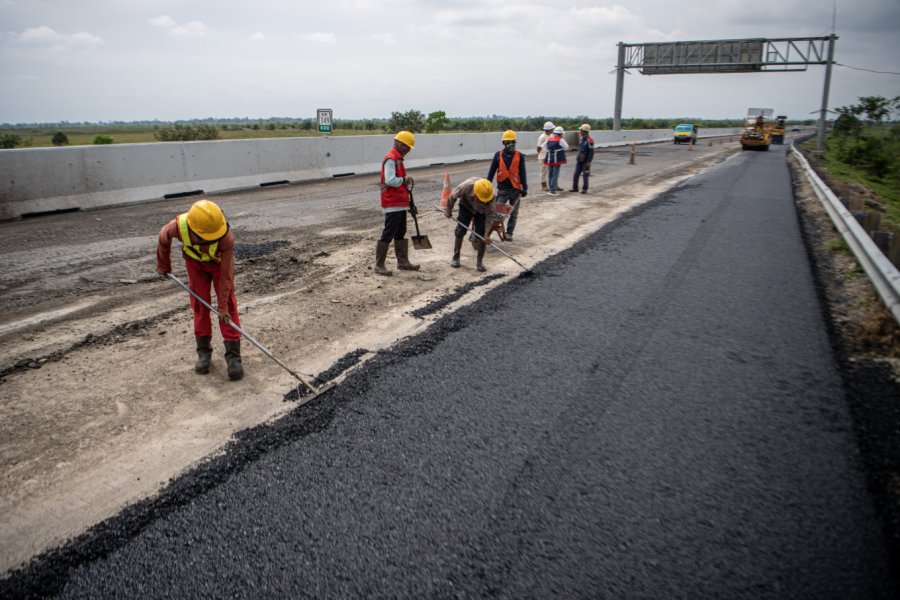Performance Grade Bitumen for Asphalt Modification
In the world of road construction and maintenance, bitumen plays a crucial role. Over the years, technological advancements have led to the development of Performance Grade (PG) Bitumen, a revolutionary type of bitumen designed specifically for asphalt modification. This innovation helps create more durable, weather-resistant, and high-performing pavements. In this blog post, we will dive deep into what Performance Grade Bitumen is, how it differs from conventional bitumen, its benefits in asphalt modification, and why it is critical for modern road infrastructure.
What is Performance Grade Bitumen?
Performance Grade (PG) Bitumen is a classification system introduced by the Superpave (Superior Performing Asphalt Pavements) system developed in the United States during the 1990s. Unlike traditional bitumen grading, which was primarily based on penetration and viscosity, PG Bitumen is graded based on its performance under specific temperature ranges.
The PG system grades bitumen based on two temperature extremes:
-
High temperature (for rutting resistance)
-
Low temperature (for cracking resistance)
For example, a PG 64-22 bitumen means it is suitable for a high pavement temperature of 64°C and a low temperature of -22°C. This classification allows engineers to select bitumen that matches the environmental and loading conditions of their project.
Why Use Performance Grade Bitumen for Asphalt Modification?
Asphalt pavements face a range of challenges including heavy traffic loads, temperature fluctuations, moisture damage, and aging. Traditional bitumen may not always provide the optimal performance needed under these conditions. Here’s where PG Bitumen shines:
1. Temperature Susceptibility Control
One of the biggest issues with conventional bitumen is its susceptibility to temperature changes — becoming too soft in heat and brittle in cold. PG Bitumen is engineered to resist these extremes, maintaining its properties to reduce rutting and thermal cracking.
2. Enhanced Durability
By selecting the right PG grade, pavements last longer and require less frequent maintenance. The bitumen binder better resists oxidative aging and maintains flexibility over time.
3. Optimized Performance for Specific Climates
Different regions experience vastly different climates. PG Bitumen allows asphalt mixtures to be tailored according to local weather, which reduces premature pavement failures.
4. Improved Load-Bearing Capacity
Traffic volumes and vehicle weights continue to increase globally. PG Bitumen enhances the stiffness and load-bearing properties of asphalt mixes, supporting heavy loads without deforming.
How is Performance Grade Bitumen Used in Asphalt Modification?
Asphalt modification** means altering the properties of the asphalt binder to improve performance. PG Bitumen is often used as a base, but it can also be combined with polymers and additives to create modified bitumen. These modifications aim to:
-
Improve elasticity
-
Increase adhesion to aggregates
-
Enhance temperature stability
-
Resist fatigue cracking
Common modifiers used alongside PG Bitumen include styrene-butadiene-styrene (SBS), crumb rubber, and polyethylene.
Key Properties of Performance Grade Bitumen
For engineers and contractors, understanding the key properties of PG Bitumen is essential to optimize asphalt mix design.
1. Rutting Resistance
PG Bitumen is tested for its ability to resist permanent deformation under high temperature and heavy loads. The high-temperature grade ensures that the binder maintains adequate stiffness during hot seasons.
2. Fatigue Resistance
Fatigue cracking occurs due to repeated traffic loading. PG Bitumen provides improved resistance to cracking by maintaining flexibility in the intermediate temperature range.
3. Thermal Cracking Resistance
At low temperatures, bitumen can become brittle and crack. The low-temperature grade of PG Bitumen guarantees sufficient flexibility to minimize thermal cracking in cold climates.
4. Viscosity and Workability
Despite its enhanced performance, PG Bitumen maintains good workability, allowing easier mixing, laying, and compaction during construction.
Benefits of Using PG Bitumen for Asphalt Pavements
1. Extended Pavement Life
By matching the bitumen grade with climate and loading conditions, roads constructed with PG Bitumen can last significantly longer, reducing maintenance costs.
2. Improved Safety
Rutting and cracking can cause hazardous driving conditions. PG Bitumen reduces these distresses, contributing to safer road surfaces.
3. Sustainability
Long-lasting pavements mean fewer repairs and overlays, resulting in reduced material consumption and less environmental impact.
4. Cost Efficiency
Although PG Bitumen may have a higher upfront cost, the reduced need for maintenance and longer service life make it a cost-effective solution over the pavement’s lifespan.
How to Select the Right Performance Grade Bitumen?
Choosing the correct PG grade depends on several factors:
-
Local climate data — maximum and minimum pavement temperatures during the year
-
Traffic loading — expected traffic volume and axle loadings
-
Type of pavement — flexible or composite pavements
-
Environmental exposure — moisture, UV, and other conditions
For example, in hot climates like the Middle East, a higher PG high-temperature grade (e.g., PG 76) is selected, while colder regions such as Canada require lower temperature grades (e.g., PG 58-28).
Challenges in Using Performance Grade Bitumen
While PG Bitumen offers many advantages, some challenges exist:
-
Cost: Higher initial cost compared to traditional bitumen
-
Storage and handling: Requires specific conditions to maintain quality
-
Mix design complexity: Needs detailed analysis and testing for best results
However, the benefits often outweigh these challenges, especially for critical infrastructure projects.
Future Trends: Performance Grade Bitumen and Sustainable Roads
With the increasing emphasis on sustainability, PG Bitumen is evolving to incorporate:
-
Recycled materials like RAP (Reclaimed Asphalt Pavement) without compromising performance
-
Bio-binders derived from renewable sources mixed with PG Bitumen
-
Nano-modification for enhanced durability and self-healing properties
These innovations are paving the way for greener, more resilient road networks worldwide.
Conclusion
Performance Grade Bitumen has transformed asphalt modification by providing a scientifically based, climate-specific approach to bitumen selection. Its ability to withstand temperature extremes, traffic stresses, and environmental factors makes it indispensable for modern road construction. By choosing the appropriate PG Bitumen, engineers and contractors can ensure longer-lasting, safer, and more cost-effective pavements that meet the demands of today’s infrastructure.
If you’re involved in road construction or maintenance, incorporating PG Bitumen in your asphalt mixes is a smart investment towards quality and longevity. For further advice on selecting the right grade and modification techniques, consult with Gulf Petro Vision as a leading bitumen supplier and materials engineers who specialize in performance-grade asphalt.






